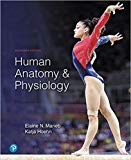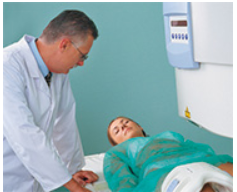
45-Year-Old Female with Dislocated Hip
Kayla Tanner, a 45-year-old mother of four, was involved in a car accident. When emergency responders arrived on the scene and extracted her from the car, they found that her right thigh appeared shorter than her left thigh. They also noticed that even slight hip movement caused considerable pain. Suspecting a hip dislocation, they stabilized and transported her.

In the emergency department, doctors discovered a decreased ability to sense light touch in her right foot, and she was unable to move her toes or ankle. Dislocation of her right hip was confirmed by X ray. Mrs. Tanner was sedated to relax the muscles around the hip, and then doctors placed her in the supine position and performed a closed reduction (“popped” the femur back in place).
2. NCLEX-STYLE After hip dislocation and reduction, the nurse would watch the patient carefully for signs of which of these problems?
a. Sciatic nerve injury
b. Instability of the pubic symphysis
c. Inflammation of the sacroiliac joint
d. Damage to the lateral epicondyle
Want to see the full answer?
Check out a sample textbook solution
Chapter 7 Solutions
Human Anatomy & Physiology Plus Modified Mastering A&P with Pearson eText -- Access Card Package 11th edition
- 1. Match each vocabulary term to its best descriptor A. affinity B. efficacy C. inert D. mimic E. how drugs move through body F. how drugs bind Kd Bmax Agonist Antagonist Pharmacokinetics Pharmacodynamicsarrow_forward50 mg dose of a drug is given orally to a patient. The bioavailability of the drug is 0.2. What is the volume of distribution of the drug if the plasma concentration is 1 mg/L? Be sure to provide units.arrow_forwardDetermine Kd and Bmax from the following Scatchard plot. Make sure to include units.arrow_forward
- Choose a catecholamine neurotransmitter and describe/draw the components of the synapse important for its signaling including synthesis, packaging into vesicles, receptors, transporters/degradative enzymes. Describe 2 drugs that can act on this system.arrow_forwardThe following figure is from Caterina et al. The capsaicin receptor: a heat activated ion channel in the pain pathway. Nature, 1997. Black boxes indicate capsaicin, white circles indicate resinferatoxin. a) Which has a higher potency? b) Which is has a higher efficacy? c) What is the approximate Kd of capsaicin in uM? (you can round to the nearest power of 10)arrow_forwardWhat is the rate-limiting-step for serotonin synthesis?arrow_forward
- Surgical Tech For Surgical Tech Pos CareHealth & NutritionISBN:9781337648868Author:AssociationPublisher:Cengage
 Medical Terminology for Health Professions, Spira...Health & NutritionISBN:9781305634350Author:Ann Ehrlich, Carol L. Schroeder, Laura Ehrlich, Katrina A. SchroederPublisher:Cengage Learning
Medical Terminology for Health Professions, Spira...Health & NutritionISBN:9781305634350Author:Ann Ehrlich, Carol L. Schroeder, Laura Ehrlich, Katrina A. SchroederPublisher:Cengage Learning - Essentials of Pharmacology for Health ProfessionsNursingISBN:9781305441620Author:WOODROWPublisher:Cengage





